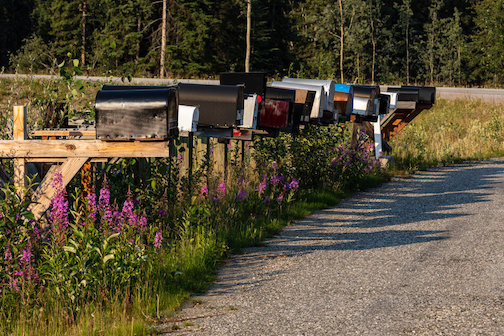Ballots will be in the mail tomorrow, April 27, for the special primary election for the temporary placeholder for Alaska’s congressional representative. The Division of Elections says it may take a few days for voters to receive them.
Alaska is conducting a special election to fill out the remaining term of the late Congressman Don Young. Since March 18, and likely until early September, Alaska is without representation in the U.S. House of Representatives.
The special election primary was made an all-mail election because the timing of the special election, which is required by law, is so tight, with the regular election for the same seat (and others) starting in August.
The primary for the special election will have 48 names on the ballot that will be sent to all 586,318 registered voters in Alaska. Ballots must be returned or postmarked by June 11 to be counted. That means voters will have about 40-45 days to vote their ballots and get them back to the division. The deadline to register to vote in the special primary election is May 12. If you’re already registered to vote, the division will be mailing the ballot at the address it has on file.
According to law, the special primary election for the congressional seat must be held on a date that is “no less than 60, nor more than 90” days from the vacancy of the seat, which was March 18. With Ballot Measure 2, the special primary is now a jungle primary, where the top four candidates — who could be from any party — advance to the special general. Because of other deadlines, such as the requirement to send military and overseas voters ballots 45 days in advance of the election, the Division of Elections needed to hold the election between June 11 and June 16, and chose June 11 as the date.
In August, the four who advance from the special primary election will appear on the main regular primary election ballot, where voters will face a separate section with candidates for the two-year seat. The candidates for the two-year seat may be different from the candidates in the section for the placeholder seat.
The special general election will be done via ranked choice voting on that ballot, while the regular primary, conducted at the same time, will be “vote for one” method. This mess of confusion has been brought to voters by Outside dark money that tricked them into believing Ballot Measure 2 was a good idea.
Whoever emerges from the special general election, which won’t be known until September, will serve out the congressman’s term until the swearing in of the new congressional representative in January.
On Wednesday, the Division of Elections will announce where absentee voting stations will be located, and will begin hiring bilingual absentee voting officials and outreach workers. There will be no polling stations on June 11, the final day.
Take a look at the ballot at this link:

A warm cozy filling knowing my regular mail service has been officicially displaced by your overwhelming abundance of personally and custom massaged voting deletrious.
Let the clown show begin.
How do you know BM2 passed because of trickery? It could have passed simply because there are enough Dems and RINOs, plus dead people, to make 50%
This mail in election is precisely why this administration will be a one timer
Exactly. I am tired of GOP shills making excuses for the governor. He talks the conservative talk but he walks the leftist walk. Palin is right about the “good ole boys network” defending its own.
“It’s in the mail”.
.
Famous last words of con artists everywhere.
Well won’t this be fun. 48 candidates. Hmmmm who are the unions voting for. Alaska is so screwed for letting the out of state signature grabbers here. GOD help us.
Remember vote the same name 4 times. Do not give anybody else a vote to count for them.
Make sure you send a few thousand to Scott Kendall, with tracers on the watermarks. Little sob would probably use them for Lisa and Doc Gross.
let the recounts begin…….
Oops – I guess this morning’s fire in the contract mail truck containing all of the mail for the Kenai Peninsula was a day early. Just a little suspicious?
Thanks Don Young. Your greed for power gave us this mess and this mess will be your legacy.
How many ballots were printed?
My sister-in-law just received her mail-in ballots and she received ballots for three of her adult children who have never voted, live and have residency out-of-state while in collage, and who have not applied for a PFD in 3 years. If this kind of sloppy accounting is happening state-wide then how can the vote be trusted?
Comments are closed.